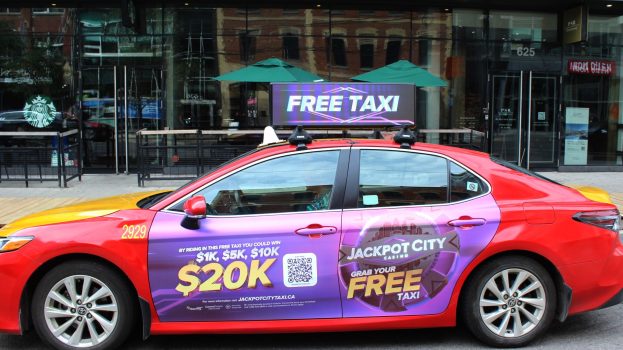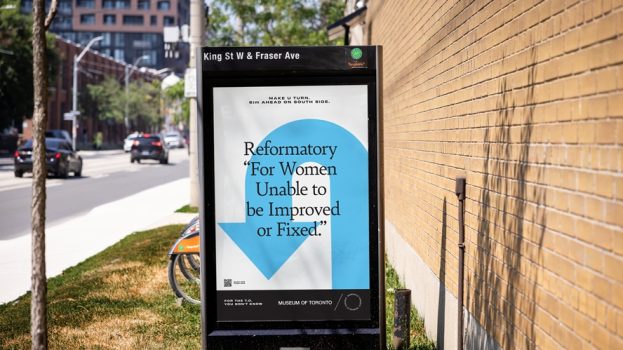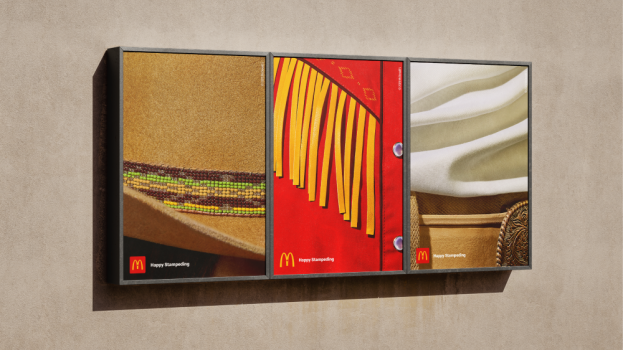‘If you can deliver a message to the consumer while they stand right beside your product, then you are onto a winner,’ says Steve Boultbee, CEO at North Vancouver-based network provider Impulse TV.
This thought is shared by many retailers in Canada, who are increasingly using in-store broadcasting as part of their overall marketing plan. In fact, research by Seattle-based network provider Muzak shows that 66% of all buying decisions are made after a customer enters a store, so marketing at point-of-purchase (P-O-P) offers a prime opportunity to grab the attention of the consumer with your latest offers and new products.
This isn’t news to U.S. retail. South of the border, at stores like Nike Town, shoppers can’t help but notice videos playing on gigantic screens from the moment they step inside the door. At Gap’s New York flagship store, customers see a towering video totem pole with multiple screens all running Gap TV spots.
Canada still lags behind its U.S. partners in adopting this method of marketing, but as technology becomes more advanced and more U.S. retailers head north, on-screen advertising is becoming more commonplace.
In fact global retail giant Wal-Mart has recently completed a storewide rollout of one of the largest in-store TV networks in the world, bringing the medium to every one of its 2,600-plus U.S. locations. With more than 90 million shoppers making their way through Wal-Mart’s U.S. stores each week, the retailer’s networking system is on par with traditional TV in terms of potential viewing numbers.
In Canada, however, Wal-Mart is playing wait-and-see for the time being. ‘We don’t see this form of marketing as a priority right now,’ says Lou Puim, director of marketing at Mississauga-based Wal-Mart Canada. ‘Right now it is too new. But we are monitoring the progress in the U.S. and if we feel that it is something the customer wants and demands then we may look at it in the future.’
According to Boultbee, some of this hesitation can be attributed to the fact that a lot of Canadian retailers spend a fortune on installing in-store systems, then fail to use them properly.
‘As many as 50% [of retailers] leave them switched off, or just showing a blue screen. That’s not going to do them any good at all,’ he says. Nor does it suffice to leave the screen showing a regular TV channel, such as MuchMusic. ‘The trouble with this is it doesn’t differentiate them from all the other stores who are doing the same thing, and it does nothing to enhance the brand.’
Network providers and retailers agree that a balance of entertainment, advertising and branding is necessary to achieve the desired results. ‘Ultimately we’re all here to generate sales, so entertainment alone is not really going to benefit us,’ explains Barb Mallin, visual merchandising manager at Toronto-based Foot Locker Canada.
Foot Locker now has a broadcasting system in 60 of its 125 Canadian stores, and the network, operated by Impulse TV, is slowly growing as store renovations take place.
Foot Locker’s core market is a 13- to 21-year-old, predominantly male group, and the programming is chosen accordingly. ‘We study what they think is cool and what their interests are,’ says Boultbee. ‘Skateboarding and hockey are big, and anything else with action and lots of movement. Music videos are also popular.’ Monitors in Foot Locker stores display ads for brands sold in the store, such as Nike, Champion and Fila.
From a media buying standpoint, ad space on in-store screens is not currently generating a whole lot of interest. ‘Normally within the buying of broadcast we use a lot of detailed data which becomes a benchmark for decision making,’ says Theresa Treutler, SVP and broadcast investment director for Toronto-based Starcom Worldwide. ‘With this form of media, that research is not usually available.’
However, she does concede that ‘it is important that we are not closed-minded, as this is certainly a form of communicating with consumers.’
The difficulty with in-store advertising is that shoppers are generally in a hurry, and distracted by the goods around them, so to be effective, the programming must be brief and adapted to suit the environment. ‘In-store video must provide information and advertising in short intense bursts,’ says Boultbee. ‘You must engage people with something that they can watch as they shop or wait.’
Mallin believes that the service is a fundamental part of Foot Locker’s overall marketing approach. ‘Being in the athletics business, it is very important to add excitement to our stores to attract customers,’ she says.
‘It also allows us to promote particular shoes that are being launched, or drive sales towards a particular product line,’ she continues. The disadvantage, Mallin says, is the difficulty in measuring the success of the system. ‘Certain shoes are only launched in certain stores so we haven’t been able to measure anything specifically.’
The location of TV monitors within a store is vital. Research by Impulse TV has found that there is a natural tendency for consumers to stop walking only when they are 10 to 15 feet into the store. At this point people tend to turn right, in order to orient themselves and scope out the store, so this is the ideal spot to position a screen. Screens positioned any closer to the door will often be wasted.
The type of monitors used can also be important. Plasma screens are starting to gain popularity, although the $10,000-to-$12,000 price tag keeps them out of reach of some retailers. ‘We are always pushing for those screens because of the power they create and the quality of the images,’ says Boultbee. By contrast, regular TV systems such as those used in Foot Locker stores may cost as little as $300 to $400 per screen, in addition to the cost of a video server.
Obtaining quality footage is by far the biggest expense for the retailer. This cost varies enormously, depending on whether existing ad and programming footage is repurposed or new programming is shot, but either way, selling space to third party advertisers can offset much of the expense. Impulse, like other in-store video suppliers, can provide video programming priced according to the number of outlets.
‘If the retailer is willing to partner with us and encourage their suppliers to advertise, then it can cost them less than the price of installing cable TV,’ says Boultbee. ‘Some end up paying nothing at all because the cost is covered by advertisers.’
In addition to Foot Locker, Impulse TV currently services branches of Canlan Ice Sports, Source for Sports, Sport Mart and the Chevron Canada gas chain. The provider carries out research to establish the target demo for each of its clients and then tailor-makes a unique broadcasting system to suit that group. As with most network providers, the programming includes a combination of video footage, supplier advertising and retailer branding.
Chevron is set to expand the P-O-P system currently employed in its Town Pantry convenience stores across Canada. The system is comprised of 27-inch computer monitors suspended from the ceiling right at the point of purchase.
‘This is something we are experimenting with right now,’ says Boultbee. ‘It’s in your face and it really gets the message across.’ This system currently spans 26 locations and will be expanded to 35 by the end of the year.
Nike Town is another retailer to make use of the big-screen approach. ‘It is important to inspire our consumers with the media we use and to bring the brand message to life,’ says Nike Corporation’s Beaverton, Ore.-based director of marketing for retail, Jodi Sittig. Nike Town’s 13 stores in the U.S., as well as the Nike Store in Toronto, all make use of in-store broadcasting, with the content designed in-house.
The Toronto store currently features one huge screen, visible from the top floor, as well as three wall TVs in the stairwell and several hanging from the ceiling around the store.
‘We bring a lot of our TV ads into the stores to promote national and regional campaigns,’ Sittig continues. New content is also developed by Nike to promote specific products or promotional periods, such as back-to-school.
Wal-Mart’s U.S. system is operated by San Francisco’s Premier Retail Networks (PRN). The company also has Sears, Circuit City and Best Buy on its client list. PRN provides a combination of high-impact walls of 40 to an overpowering 110 TV sets, storewide TV located in high-traffic spots and department-specific TV tailored for individual aisles.
‘The most important thing we do is to help brand the retailer and the in-store environment,’ says PRN CEO Charlie Nooney. ‘We also provide a service for the shoppers to help improve the overall shopping experience.’
PRN, which services 5,000 stores in the U.S. and reaches more than 100 million shoppers per week, makes use of both traditional and non-traditional ads. Nooney says the cost of advertising on PRN’s network is about one-third the cost of primetime network space.






















